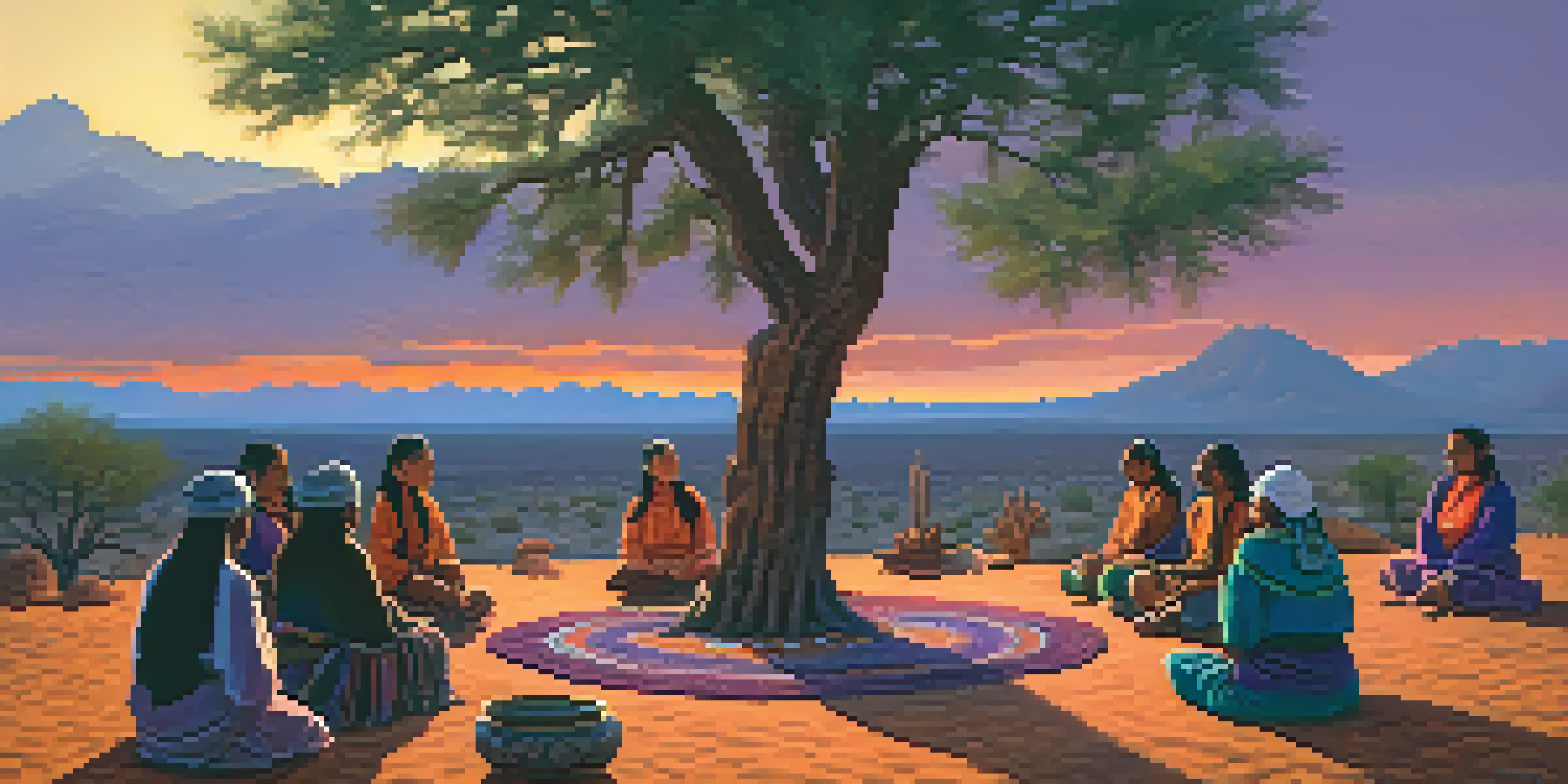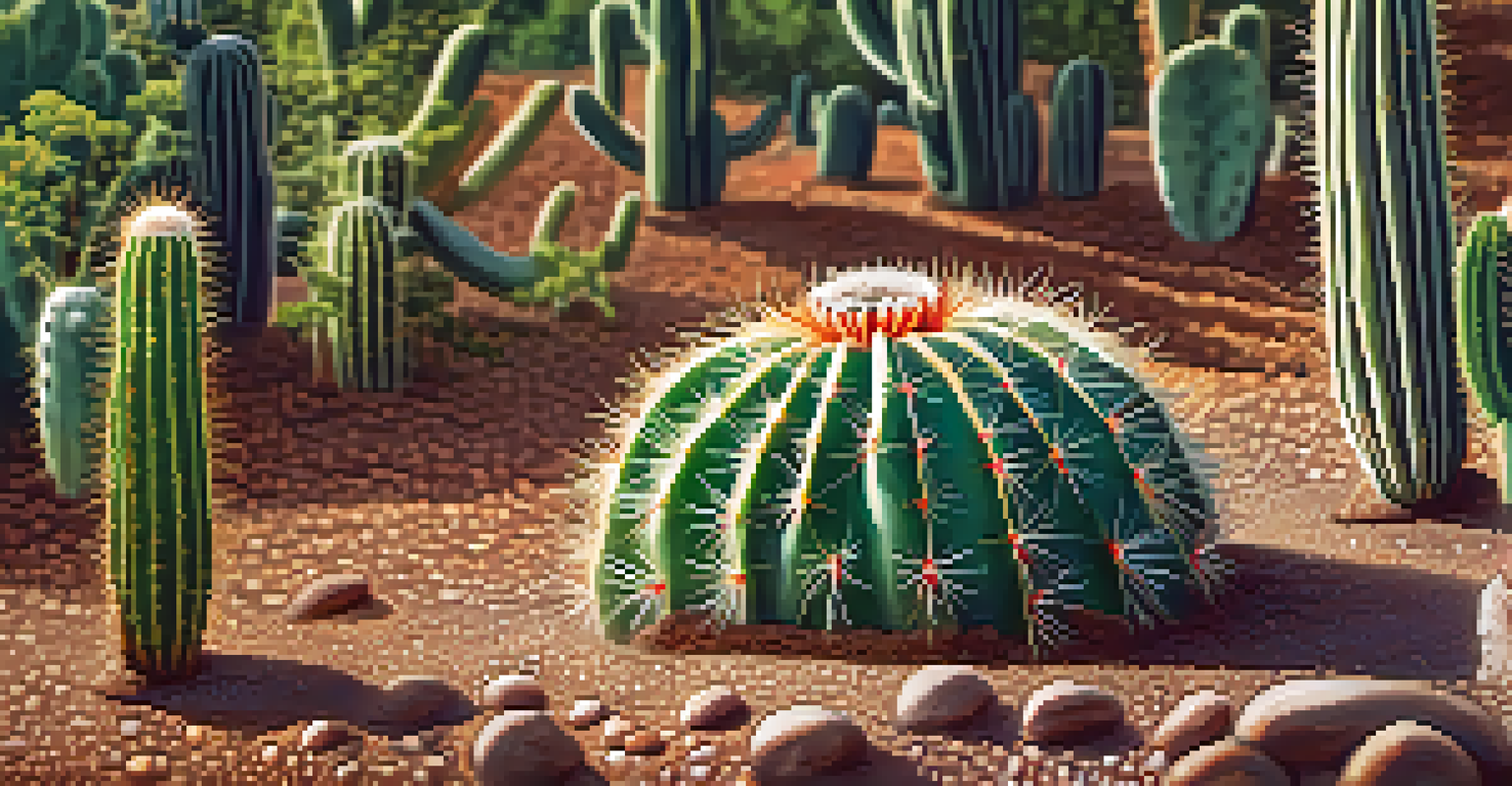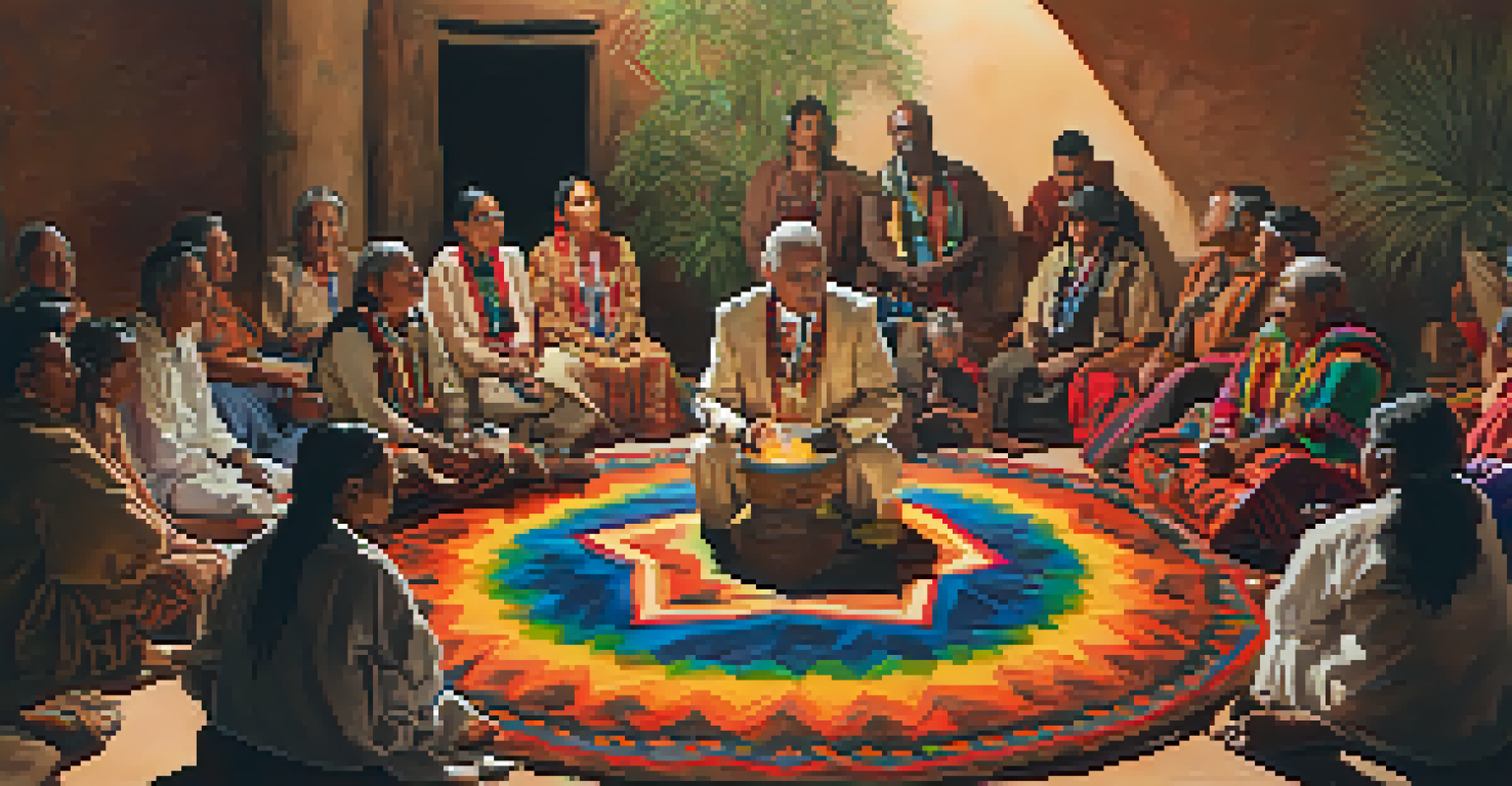The Role of Oral Tradition in Peyote Ceremony Narratives

Understanding Oral Tradition in Indigenous Cultures
Oral tradition is a fundamental aspect of many Indigenous cultures, serving as a primary means of preserving history, beliefs, and practices. Through storytelling, knowledge and values are passed down from generation to generation, ensuring cultural continuity. This method not only fosters community identity but also strengthens the bonds among its members through shared narratives.
Stories are a communal currency of humanity.
In the context of the Peyote ceremony, oral tradition plays a crucial role in conveying the significance of the ritual and the teachings associated with it. Elders often recount stories of ancestors or key spiritual events that have shaped their understanding of the Peyote plant and its uses. These narratives are rich in symbolism and provide deeper meaning to the ceremonial experience.
Moreover, oral traditions allow for flexibility and adaptation, which means that stories can evolve over time, reflecting the current experiences and challenges faced by the community. This dynamic nature ensures that the narratives remain relevant and resonate with both young and old participants during the Peyote ceremonies.
The Historical Context of Peyote Ceremonies
Peyote ceremonies have a long-standing history among various Indigenous peoples in North America, particularly within the Native American Church. These ceremonies serve as sacred gatherings for spiritual healing, community bonding, and cultural expression. Understanding the historical context helps participants appreciate the depth and significance of the narratives shared during the ceremonies.

The use of Peyote, a psychoactive cactus, in these ceremonies is deeply intertwined with Indigenous spirituality and cultural practices. Oral narratives often recount the origins of Peyote use, detailing how it was gifted to the people by divine entities or ancestors. Such stories help to frame the ceremony as not just a ritual, but a continuation of a sacred legacy.
Oral Tradition Preserves Culture
Oral tradition is essential for Indigenous cultures, facilitating the transmission of history, beliefs, and practices across generations.
As these narratives are shared, they also serve to educate younger generations about their cultural heritage and the importance of preserving these traditions. This intergenerational transmission of knowledge is vital for maintaining the identity and spiritual practices of Indigenous communities.
Key Themes in Peyote Ceremony Narratives
Peyote ceremony narratives often encompass themes of healing, transformation, and unity. Participants frequently share personal experiences or collective stories that highlight the healing properties of Peyote, both physically and spiritually. These narratives reinforce the belief in the plant's power and its role in facilitating personal and communal growth.
Oral tradition is the foundation of our culture and the lifeblood of our identity.
Another prominent theme is the connection between humans and the natural world. Many stories emphasize the importance of respecting nature and understanding one's place within the ecosystem. This connection not only enriches the participants' experiences but also fosters a sense of responsibility towards environmental stewardship.
Lastly, unity is a recurring motif in these narratives. Through storytelling, participants are reminded of their shared struggles, triumphs, and spiritual journeys. This sense of belonging and community is integral to the Peyote ceremony, making it a powerful experience for all involved.
The Role of Elders in Storytelling
Elders hold a unique position in Peyote ceremonies as the custodians of oral traditions. Their role as storytellers is pivotal, as they possess the wisdom and knowledge accumulated over years of experience. By sharing their stories, they provide guidance and insight to younger participants, fostering a deeper understanding of the ceremony's significance.
Through their narratives, elders often convey moral lessons and cultural values, ensuring that these teachings resonate with the community. Their storytelling is not merely a recounting of events; it is an art form that engages the audience, prompting reflection and discussion. This interactive aspect enhances the learning experience for all participants.
Elders as Key Storytellers
Elders play a crucial role in Peyote ceremonies by sharing wisdom and narratives that connect the community and reinforce cultural values.
Moreover, the presence of elders during the Peyote ceremony reinforces the importance of respect for one's lineage and heritage. Their stories serve as a bridge connecting the past, present, and future, emphasizing the continuity of tradition and the collective memory of the community.
Symbolism in Peyote Ceremony Narratives
Symbolism plays a crucial role in the narratives shared during Peyote ceremonies, adding layers of meaning to the stories. Common symbols, such as the Peyote plant itself, represent spiritual insight, healing, and connection to the divine. These symbols help participants to interpret their own experiences during the ceremony, creating a personalized spiritual journey.
Furthermore, the use of metaphor in storytelling allows for complex ideas to be conveyed in a relatable manner. For example, a narrative might compare the journey of the soul to a river, illustrating the flow of life and the importance of navigating obstacles. This creative use of language not only captivates the audience but also deepens their understanding of the spiritual lessons being shared.
The symbolism inherent in these narratives also encourages participants to reflect on their own lives and experiences. By engaging with the stories on a personal level, individuals can derive their own meanings and insights, making the ceremony a transformative experience that extends beyond the ritual itself.
The Impact of Modernization on Oral Traditions
As Indigenous communities face the pressures of modernization, the role of oral tradition in Peyote ceremonies is evolving. While many aspects of these traditions remain intact, the influence of technology and changing social dynamics can alter how stories are shared and preserved. This shift presents both challenges and opportunities for maintaining cultural heritage.
One challenge is the potential loss of traditional storytelling practices as younger generations become more immersed in digital media. However, some communities are finding innovative ways to incorporate technology into their oral traditions, such as recording stories or sharing them through social media platforms. This adaptation can help reach a wider audience and engage those who might not have participated in traditional settings.
Modernization Challenges Traditions
While modernization presents challenges to oral traditions, many Indigenous communities are adapting by integrating technology to preserve and share their narratives.
Despite these changes, the essence of oral tradition remains vital to Peyote ceremonies. By embracing both traditional and modern methods of storytelling, communities can ensure that their narratives continue to thrive, fostering cultural resilience even in the face of modernization.
Conclusion: The Enduring Power of Oral Tradition
In conclusion, oral tradition holds a significant place in the Peyote ceremony, serving as a vehicle for cultural expression and spiritual understanding. The narratives shared during these rituals not only preserve history but also promote healing, unity, and connection to nature. As participants engage with these stories, they are reminded of their shared heritage and the importance of passing it down.
The role of elders as storytellers reinforces the value of wisdom and intergenerational learning, ensuring that cultural teachings remain alive. As we navigate the complexities of modern life, the adaptability of oral traditions allows them to flourish in new contexts, bridging the gap between past and present.

Ultimately, the enduring power of oral tradition in Peyote ceremonies illustrates the resilience of Indigenous cultures. By valuing and embracing these narratives, we not only honor the past but also pave the way for future generations to continue this rich legacy.